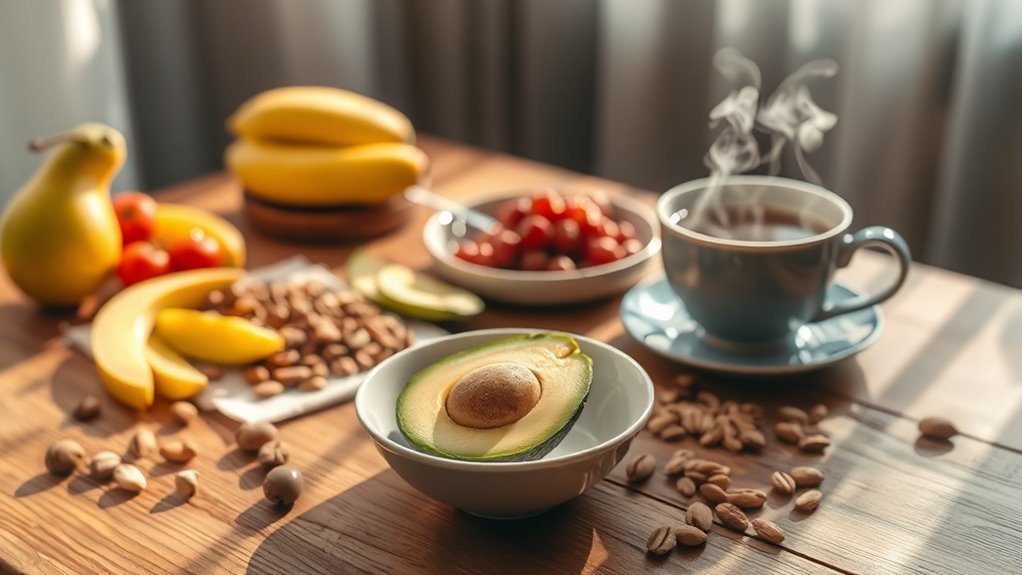Mindful Eating Hack That Helps You Eat Less and Feel Full Longer!
Have you ever noticed how the size of your plate can influence how much you eat? It’s a simple yet powerful hack for mindful eating that can help you feel satisfied with less food. By using smaller plates and bowls, you can trick your brain into thinking you’ve eaten more than you actually have. But there’s more to mindful eating than just portion sizes. Let’s explore some techniques to enhance your dining experience and improve your relationship with food.
Understanding Mindful Eating
Mindful eating is more than just a trend; it’s a powerful approach that encourages you to savor every bite. When you practice mindful eating, you connect with your food on a deeper level, embracing flavors, textures, and aromas. You’re not just consuming; you’re experiencing. This journey invites you to pay attention to your body’s hunger cues and emotions, fostering a sense of belonging with what you eat.
Imagine sitting down at a table, free from distractions, where every meal becomes a moment of gratitude. You take the time to appreciate the effort that went into your food, from its preparation to its presentation.
Mindful eating allows you to cultivate a relationship with your meals, making your dining experience more fulfilling. You’ll discover that by slowing down and engaging fully, you not only enjoy your food more but also nourish your body and spirit, creating a sense of community within yourself. Additionally, mindful eating promotes better digestion and enhances metabolism, leading to improved overall health and well-being.
The Importance of Eating Slowly
Eating slowly is essential for truly enjoying your meals and recognizing your body’s signals. When you take your time to savor each bite, you give yourself the chance to truly taste the flavors and appreciate the textures. This not only enhances your meal but also helps you feel more connected to your food and those you share it with.
As you slow down, your body gets the opportunity to signal when it’s satisfied, preventing overeating. You’re more likely to notice when you’re full, allowing you to stop eating before you feel uncomfortable.
Additionally, enjoying meals at a leisurely pace fosters a sense of community, whether you’re dining with family or friends. Sharing moments over food becomes more meaningful when you’re present and engaged. This practice also enhances digestion and promotes self-compassion, helping you develop a healthier relationship with food.
Techniques to Enhance Awareness While Eating
To truly enhance your awareness while enjoying meals, try engaging your senses fully. When you immerse yourself in the experience, you’ll not only savor your food but also connect with it on a deeper level.
Here are three techniques to help you do just that:
-
Observe Colors and Textures: Before you take a bite, take a moment to appreciate the vibrant colors and unique textures on your plate. It’ll make you more present.
-
Savor Aromas: Bring the dish close to your nose and inhale deeply. Notice how the aromas stimulate your appetite and enhance your anticipation.
-
Listen to Sounds: Pay attention to the sounds of your food as you eat—whether it’s the crunch of fresh veggies or the sizzle of a hot dish. This adds another layer to your experience.
Additionally, practicing mindful eating can help you recognize hunger cues and develop a healthier relationship with food.
Portion Control Strategies
Engaging your senses while eating can significantly enhance your overall experience, but it’s equally important to be mindful of how much you serve yourself. Practicing portion control can help you enjoy your meals without overindulging.
Start by using smaller plates or bowls; this simple change can trick your brain into thinking you’re eating more. Aim to fill half your plate with vegetables, a quarter with lean protein, and the rest with whole grains.
Before reaching for seconds, take a moment to assess your hunger. Are you truly still hungry, or just eating out of habit? Slow down, savor each bite, and listen to your body. Paying attention to your fullness cues can make a big difference. Additionally, using blue plates can help manage portion sizes effectively, leading to reduced calorie intake.
Lastly, consider sharing meals with friends or family; it creates a sense of community while naturally reducing portions. By implementing these strategies, you’ll feel satisfied and connected to your food and those around you.
Long-term Benefits of Mindful Eating
While you might initially embrace mindful eating for immediate satisfaction, its long-term benefits extend far beyond the dining table.
By practicing mindfulness, you can cultivate a healthier relationship with food and your body. Here are three key benefits to consider:
-
Weight Management: Mindful eating helps you recognize hunger and fullness cues, leading to healthier portion control and potentially sustainable weight loss.
-
Enhanced Digestion: Slowing down and savoring your meals can improve digestion. You’re likely to chew food more thoroughly, allowing your body to absorb nutrients better.
-
Emotional Well-being: Engaging fully in your meals fosters a sense of connection, not just to your food but also to yourself. This practice can reduce stress and promote a more positive mindset, particularly as you become more aware of emotional eating patterns.




